Surgical Wound Closure Techniques and Considerations
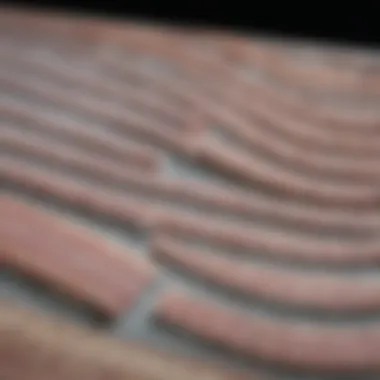
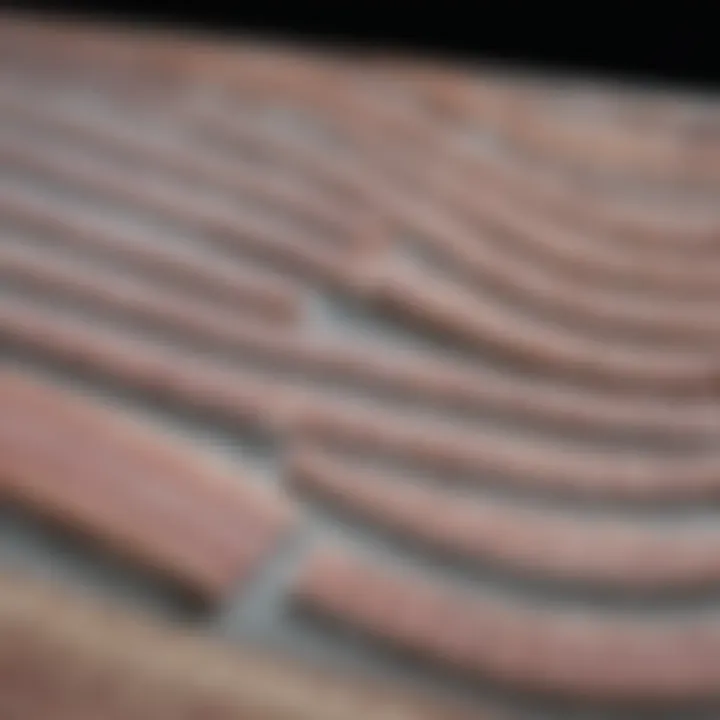
Intro
Surgical wound closure is a fundamental aspect of any surgical procedure, arguably as vital as the surgery itself. It serves not merely as a means of sealing the cut but plays a critical role in the healing journey of the patient. With any surgical intervention, the way a wound is closed has repercussions that extend far beyond the operating room—touching on aspects of recovery time, aesthetic outcomes, and potential complications. Moreover, a grasp of suitable techniques and materials can make a world of difference in how one approaches treatment.
Within this article, we embark on an exploration of the various techniques used for surgical closure, including stitches, staples, and adhesive strips, each with its own set of advantages and limitations. Additionally, we’ll look into the materials that can be utilized—be it absorbable or non-absorbable sutures—and discuss critical considerations that healthcare professionals must take into account when deciding on the best approach for a given situation.
Understanding the complex dynamics of wound healing is crucial for practitioners. The physiological mechanisms involved in recovering from a surgical incision have a huge impact on the choices made during the closure.
As such, the insights presented in this guide aim to equip surgeons and healthcare practitioners with the knowledge required to enhance patient outcomes effectively.
Key Findings
The examination of surgical wound closure techniques reveals several important insights concerning methods employed and their influence on post-operative recovery. It is not merely about aesthetics; how a wound is closed can significantly affect healing time and the likelihood of complications, such as infections and dehiscence. Here are a few key takeaways:
- Techniques and Materials: Different closure methods, such as interrupted and continuous suturing, influence how tension is distributed along a wound. The choice of materials, whether sutures or staples, can also determine the closure's success.
- Patient Factors: Individual patient factors—like age, nutrition, and underlying health conditions—play a significant role in healing outcomes. Personalized approaches to wound closure can lead to better results.
- Closure Timing: Timeliness in closing surgical wounds can impact scarring and recovery. Delays in closure may expose the wound to environmental factors that could impede healing.
"Effective wound closure is a dance between materials, technique, and patient health. Each step matters immensely."
Despite the technical know-how, one must remember that no single approach fits all. This complexity should encourage ongoing education and adaptation among practitioners.
Methodology
This article undertakes a synthesis of current literature and research findings on surgical wound closure practices. The aim is to create a thorough resource that reflects both established principles and new advancements in the field.
Research Design
We utilized a qualitative research design to gather insights from recent studies and expert opinions surrounding surgical closure techniques. By analyzing various publications, we aimed to depict a comprehensive view of the challenges and innovations in surgical wound management.
Data Collection Methods
The data for this article comes from a variety of reliable sources, including:
- Peer-reviewed journals: These serve as the backbone of evidence-based practice.
- Books on surgical techniques: They provide foundational knowledge and updated practices.
- Online medical databases: Such as PubMed and Google Scholar, which house a plethora of current research articles.
In drawing from these resources, the goal has been to ensure thoroughness, accuracy, and relevance in understanding surgical wound closure.
Foreword to Surgical Wound Closure
Surgical wound closure is not just a fundamental aspect of surgical procedures; it's a critical factor that emphasizes patient safety and recovery. Understanding the nuances of this topic allows healthcare professionals to make informed decisions during the delicate process of wound management. The effectiveness of a closure method can greatly influence healing, minimize complications, and enhance the patient's overall experience in a healthcare setting.
Understanding Wounds
Wounds, fundamentally, are the result of an interruption in the skin integrity. They can be classified as acute or chronic, each possessing its distinct healing characteristics. Acute wounds, such as those seen in surgical settings, typically follow a predictable healing trajectory. In contrast, chronic wounds may linger, often related to underlying health issues like diabetes or poor circulation. This distinction is key to tailoring the appropriate closure technique, as the healing dynamics of different wound types can vary significantly.
Proper recognition and understanding of the wound characteristics often hinge on several factors:
- Size and Depth: Larger or deeper wounds may necessitate more complex closure methods to ensure effective healing.
- Location: Areas prone to tension or movement can influence how a wound should be closed.
- Tissue Type: Different tissues have varying healing capabilities; for example, muscle and skin respond distinctively.
Importance of Proper Closure
Choosing the right closure method not only aids in the efficient healing of the wound but also significantly reduces the risk of complications such as infections and dehiscence. Proper closure techniques can promote better cosmetic outcomes, which is particularly vital in areas like the face or hands where scarring can result in both functional and aesthetic concerns.
Effective wound closure involves a thoughtful approach, considering patient-specific factors such as:
- Age: Younger patients may heal faster, allowing for more straightforward closures, while older patients may require specialized consideration.
- Comorbidities: Conditions like obesity or vascular disease can complicate healing and necessitate tailored closure techniques.
- Environment: Contaminated wounds require careful planning to minimize infection risk and ensure proper healing.
"The skillful practice of surgical wound closure demands not just technical ability but also an astute understanding of biological repair mechanisms and individual patient needs."
In summary, the realm of surgical wound closure encompasses a myriad of considerations. The intricacy of wound management can directly influence not just physical health outcomes but also the psychological well-being of patients. As our understanding of the healing process progresses, so too does the array of techniques and materials available, urging healthcare providers to stay informed and adaptable.
The Physiological Basis of Wound Healing
Understanding the physiological basis of wound healing is crucial for effective surgical wound closure. Wound healing is not merely a process of skin coming together but involves a complex interaction of various cells, tissues, and biochemical factors. The efficiency of these processes can significantly affect both the outcome of the surgical procedure and the recovery of the patient.
There are several phases of wound healing, commonly categorized as the inflammatory, proliferative, and maturation phases. Each phase plays a unique role in the overall healing process. Furthermore, factors such as patient health, nutritional status, and the local wound environment heavily influence the effectiveness of these phases. By grasping these elements, healthcare providers not only improve surgical outcomes but also enhance aesthetic results, ensuring patients leave the operating room with minimal complications.
Phases of Wound Healing
Inflammatory Phase
The inflammatory phase is the body's immediate reaction to injury. It begins the moment the skin is breached, with blood vessels constricting to minimize blood loss—often described as a protective reflex. Once constriction ends, the vessels dilate to allow essential immune cells, such as neutrophils and macrophages, to access the wounded site. This phase is vital for clearing debris and pathogens.
A key characteristic of this phase is the release of cytokines and growth factors, which pave the way for the next phase. What's interesting here is that while inflammation is often perceived negatively due to pain and swelling, it is actually a necessary step for an effective healing process.
However, one notable disadvantage is that if this phase is prolonged or excessive, it can lead to chronic inflammation, which can complicate the healing process.
Proliferative Phase
Following the inflammatory phase, the proliferative phase kicks in. This period is characterized by tissue formation; granulation tissue starts developing. Fibroblasts play a major role here—they produce collagen, providing strength and structure to the healing tissue. Additionally, angiogenesis occurs during this phase, replenishing the blood supply to ensure the healing tissue receives adequate oxygen and nutrients.
One remarkable feature is the rapid regeneration of epithelial cells, which helps restore the skin's barrier function. The advantage of a strong proliferative phase is that it can significantly shorten recovery times. However, if not properly monitored, there might be risks of hypertrophic scars or keloids, etc.
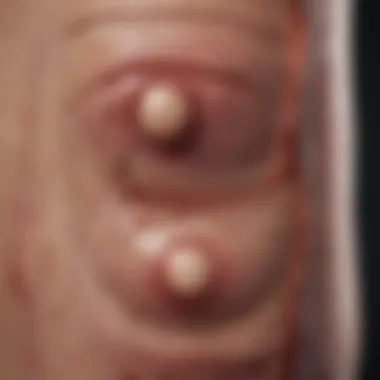
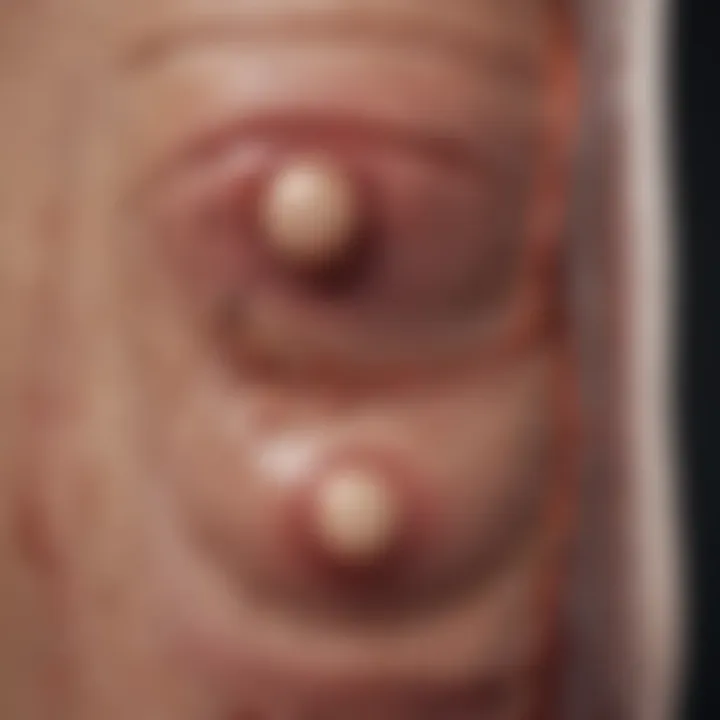
Maturation Phase
The maturation phase is the final phase of wound healing, where the wound undergoes remodeling. This phase can last for months or even years after the initial injury, as collagen fibers reorganize and strengthen. During this period, the scar tissue formed becomes more resilient and less vascular.
A distinctive aspect of this phase is the gradual decrease in the wound's fragility and improvement in tensile strength. Even though the new tissue might not have the same characteristics as the original skin, advancements in scar management techniques can optimize overall appearance. A potential downside is that patient's expectations might not align with the possible outcomes, leading to dissatisfaction.
Factors Influencing Healing
Patient Health
Patient health plays a colossal role in wound healing. Underlying conditions like diabetes, cardiovascular diseases, and autoimmune disorders can severely impede the healing process. Maintaining a stable condition is, therefore, non-negotiable for successful surgical outcomes.
The advantage of prioritizing patient health is that it sets a solid foundation for effective healing. However, one must consider that some conditions may not be easily manageable, which can complicate recovery.
Nutritional Status
Nutritional status deserves careful attention as well. Nutrients like proteins, vitamins, and minerals are essential in the healing process. For instance, Vitamin C aids in collagen synthesis, while Zinc supports immune function. A well-nourished patient tends to have fewer complications post-surgery.
The unique feature here is that nutritional interventions can be implemented early on to improve healing outcomes. Nonetheless, determining individual nutritional needs can be challenging and requires thorough assessment.
Local Wound Environment
Finally, the local wound environment impacts healing significantly. Factors such as moisture levels, temperature, and presence of infection must be carefully controlled. A moist wound environment can promote cell migration and increases healing rates.
The distinguishing feature of maintaining the local environment is infection control, which can dramatically affect recovery speed and overall wound integrity. However, pitfalls exist, such as over-dressing that leads to maceration, which can cause further complications.
The interplay of these various phases and factors of wound healing offers a roadmap for surgical practices aimed at optimizing closure techniques and enhancing recovery.
Types of Surgical Wounds
The categorization of surgical wounds is paramount as it directly influences not only the approach to closure but also the anticipated healing trajectory. Understanding the various types of wounds—including acute and chronic wounds, as well as contaminated and infected wounds—allows healthcare practitioners to make informed decisions, tailor their techniques, and ultimately ensure better outcomes for patients.
Acute vs. Chronic Wounds
Acute wounds refer to injuries that heal within a predictable time frame. They are typically caused by trauma, surgical procedures, or other events leading to a break in the skin. The healing process for these types of wounds generally progresses through the phases of inflammation, proliferation, and maturation within a few weeks, making intervention straightforward.
In contrast, chronic wounds linger beyond the normal healing window, often due to underlying health conditions such as diabetes or poor circulation. This group encompasses pressure ulcers, diabetic foot ulcers, and venous leg ulcers. Managing chronic wounds requires a more nuanced approach—the solutions are not always cut and dry since factors like inadequate blood supply or infection can significantly impair healing.
Key Differences:
- Healing Time: Acute wounds generally heal within weeks, while chronic wounds persist for months or even years.
- Intervention Strategy: Acute wounds may often call for direct closure methods; chronic wounds usually necessitate ongoing care and specialized techniques.
Balancing these differences is essential. A practitioner’s awareness of the nature of the wound dictates the selection of closure method, ensuring that the chosen approach aligns with the healing capabilities of the individual.
Contaminated and Infected Wounds
Differentiating between contaminated and infected wounds is critical in surgical practice. Contaminated wounds are those exposed to pathogens but not yet exhibiting signs of infection. Such wounds may include surgical sites where bacteria from the skin or surrounding environment can breach the barrier but haven’t resulted in any clinical infection. It is crucial to recognize this stage, as appropriate closure can often prevent these wounds from progressing to full-blown infections.
In contrast, infected wounds show clinical signs such as increased redness, warmth, swelling, and pus production. This progression indicates that the body's defense mechanisms have already been overwhelmed by pathogens. Treating infected wounds involves wound debridement—removing dead tissue that can harbor bacteria—prior to closure. Effective management of these types of wounds can reduce complications and ultimately help with better healing outcomes.
"Recognizing a wound's status—whether acute or chronic, contaminated or infected—can mean the difference between seamless healing and significant complications."
Considerations for Management:
- Immediate action on infected wounds is necessary to prevent systemic issues.
- Monitoring for signs of infection in contaminated wounds helps guide appropriate interventions and maintains effective healing.
Understanding these wound types empowers healthcare professionals with the knowledge to apply suitable closure techniques, contributing to enhanced recovery and optimal patient well-being.
Surgical Closure Techniques
In the landscape of surgical practices, the choice of wound closure technique can significantly shape healing outcomes. Each method is born from a blend of anatomical understanding and the specific dynamics of the wound type. The decision process encompasses several crucial factors including the nature of the wound, patient health, and the surgeon's familiarity with the technique. This section aims to dissect the core techniques employed in surgical closure, presenting a nuanced view of each approach that underscores their benefits and considerations.
Primary Closure
Primary closure stands at the forefront of surgical techniques. This method involves directly suturing the wound edges together, aiming to achieve rapid healing with minimal scarring. The beauty of this technique lies in its simplicity; it provides the body with the cleanest possible restoration of the skin's integrity.
Key advantages of primary closure:
- Rapid Healing: Wounds are closed swiftly which may lead to shorter recovery times for patients.
- Minimal Scar Formation: When done correctly, it usually results in finer scars, which is particularly important in visible or sensitive areas.
- Reduced Infection Risks: When the wound edges are brought together immediately, the risk of contamination is lower.
However, considerations must be made. The wound must be suitable for primary closure, meaning it should not exhibit signs of infection or excessive tension. Poorly chosen candidates for this closure might end up experiencing complications such as dehiscence, where the edges separate after the procedure.
Delayed Primary Closure
Delayed primary closure offers a middle ground between closure techniques, allowing for wound evaluation before closure. Initially, the wound is left open to facilitate drainage and reduce infection risks. After a few days, once the risk factors diminish, the edges are brought together with sutures.
Benefits of delayed primary closure include:
- Infection Management: By delaying the closure, the surgeon can monitor for signs of infection and take necessary interventions.
- Wound Optimization: It provides time for edema to resolve, which can make the closure easier and more effective.
Despite its benefits, this technique does require careful monitoring. The transitional phase is critical, and the surgeon must navigate the challenges presented by tissue integrity and the potential for scarring.
Secondary Intention Healing


Secondary intention healing embraces a reactive approach, allowing the wound to heal naturally from the bottom up. This method involves leaving the wound open, allowing granulation tissue to fill in the void over time.
The core strength of this method lies in its simplicity and adaptability to various wound types, particularly those hard to close due to significant tissue loss or contamination.
Critical aspects of secondary intention healing are:
- Natural Healing Process: Fosters the formation of healthier tissue as the body lays down new cells organically.
- Flexibility: Useful in instances where primary closure isn't feasible, such as in large, complex, or contaminated wounds.
Yet, it does come with drawbacks. The healing time is prolonged, and the resultant scars can be more prominent. Additionally, this method relies heavily on patient compliance with post-operative care to avoid complications such as infection.
"Choosing the appropriate closure technique is not just about preference; it’s about leveraging the unique circumstances surrounding each wound to promote the best possible healing environment."
Materials for Wound Closure
In the realm of surgical practices, selecting appropriate materials for wound closure plays a pivotal role in optimizing patient recovery and minimizing complications. The choice of sutures, staples, or adhesives directly influences healing efficiency, aesthetics, and even the risk of infections. Understanding the properties and applications of these materials is essential not only for surgeons but also for patients who aim for successful recovery post-surgery. The effective application of these materials can lead to better outcomes and improved quality of life.
Sutures
Sutures are perhaps the most recognized material used in surgical wound closure. They come in a wide array of types, each tailored to meet specific clinical needs. Proper selection is essential as it can alter the wound healing process and surgical outcomes.
Absorbable Sutures
Absorbable sutures serve as a key ally in wound management, especially for internal tissues where removal isn't feasible. Their main advantage lies in their ability to dissolve over time, eliminating the need for a follow-up visit to remove sutures. Materials like polyglycolic acid and polylactic acid are commonly used for these sutures. They offer noteworthy flexibility and minimal tissue reaction, promoting faster healing in the surrounding tissue.
However, one should consider that absorbable sutures have a finite lifespan; they typically lose integrity within a few weeks. This characteristic makes them suitable for applications where long-term support isn't necessary. Automatic degradation can sometimes lead to early loss of tension or support in certain cases, which could be a disadvantage if not properly assessed during surgical planning.
Non-absorbable Sutures
Non-absorbable sutures, on the other hand, are vital for wounds that require prolonged support. Materials like nylon and polypropylene fall into this category, providing strength and reliability. These sutures maintain their structure indefinitely, which makes them ideal for securing skin layers or closing high-tension areas, often enhancing cosmetic results.
Interestingly, non-absorbable sutures can also be easily removed if necessary, offering flexibility for surgeons. Still, they do pose a risk of inducing a foreign body reaction if not positioned correctly. Their rigidity can potentially lead to increased discomfort for patients during the initial healing phase, thus making careful selection paramount in surgical practices.
Staples and Adhesives
Beyond sutures, staples and adhesives have emerged as essential tools in modern surgical wound closure. They each offer unique benefits and considerations, changing the landscape of how we approach wound management.
Metal Staples
Metal staples offer a swift and effective closure method, primarily used in abdominal and thoracic surgeries. Their main draw is efficiency; closing a wound with staples can often save valuable time in the operating room. Stainless steel staples provide exceptional tensile strength, effectively supporting the healing tissue.
The main advantage comes from their ease of application and immediate effectiveness. However, the removal process can be uncomfortable, and improper application may lead to deviations in aesthetic outcomes. Also, the potential for skin irritation cannot be overlooked. This makes it essential for surgeons to weigh the benefits against the possible side effects.
Surgical Adhesives
Surgical adhesives are garnering more attention as an attractive alternative to traditional methods. These adhesives, like 2-octyl cyanoacrylate, bond tissues with remarkable speed and provide a waterproof seal. They are particularly useful in areas where removing sutures may be challenging or where optimal cosmetic result are desired.
The unique feature of surgical adhesives lies in their flexibility and ease of use. No additional instruments are needed, which can streamline the closing process. However, some limitations exist; for instance, they may not be appropriate for larger wounds or those exposed to extreme movement, as they might fail under high tension. Additionally, there's a risk of allergic reactions, albeit rare.
In summary, the choice of materials for wound closure should be informed by factors like wound location, patient needs, and precision in surgical technique. Balancing efficiency with the safety of the choice can make all the difference in a patient's recovery journey.
Understanding these nuances ensures healthcare professionals can make informed decisions tailored to individual cases, leading to better surgical outcomes overall.
Selection Criteria for Closure Techniques
Choosing the right method for closing surgical wounds isn't just about stitching things up and calling it a day. It's a meticulous process that weighs different factors to ensure the best possible outcomes for the patient. Understanding these selection criteria can drastically influence recovery, functionality, and aesthetics, making it a crucial part of surgical practice. This section will delve into the elements that guide surgeons in choosing the appropriate closure technique for a given wound.
Wound Location and Type
The placement and nature of the wound can significantly sway the choice of closure technique. For example, a wound situated on a highly mobile part of the body, like the elbow or knee, might require a different approach than one on a more stable area like the abdomen. Surgeons consider factors such as tension, potential for movement, and risk of complications when assessing wounds.
- Cosmetic considerations: In areas like the face or neck, closures that minimize scarring, like subcuticular sutures or adhesives, are often preferred.
- Infection risk: A contaminated wound may necessitate more complex closure techniques or delayed closure to allow for drainage and healing before full closure can be achieved.
This multidisciplinary decision-making ensures the best fit between the wound and the method of closure.
Patient Factors
A patient's individual characteristics are paramount when determining the appropriate closure technique. Two significant aspects, age and comorbidities, stand out in this regard.
Age
Age can play a pivotal role in wound healing processes. Younger patients generally heal faster and have more elastic skin, making certain closure techniques more suitable.
- Key characteristic: Pediatric patients often present with quicker healing times but might require additional care to avoid excess scarring.
- Unique features: Older adults may struggle with slower healing due to factors like thinner skin, reduced circulation, and the presence of chronic conditions.
- Advantages/disadvantages: Selecting an age-appropriate closure method can prevent complications. For instance, using absorbable sutures in elderly patients minimizes the risk of needing follow-up care for suture removal.
Comorbidities
Patients with existing comorbidities, such as diabetes, cardiovascular conditions, or autoimmune disorders, present unique challenges in wound management. Comorbidities can complicate the healing process significantly.
- Key characteristic: Conditions like diabetes can impair circulation and delay healing, prompting surgeons to choose techniques that minimize tension at the wound site.
- Unique features: In patients with immune deficiencies, opting for methods that reduce infection risk is critical.
- Advantages/disadvantages: Properly assessing comorbidities allows surgeons to tailor their closure strategy, potentially improving the healing trajectory and reducing complication rates.
Surgeon Expertise
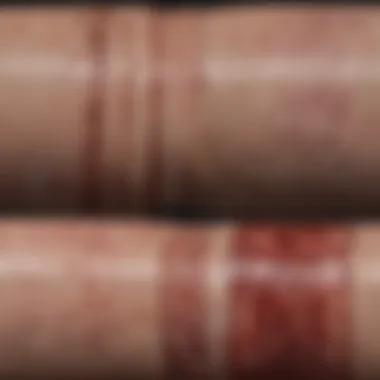
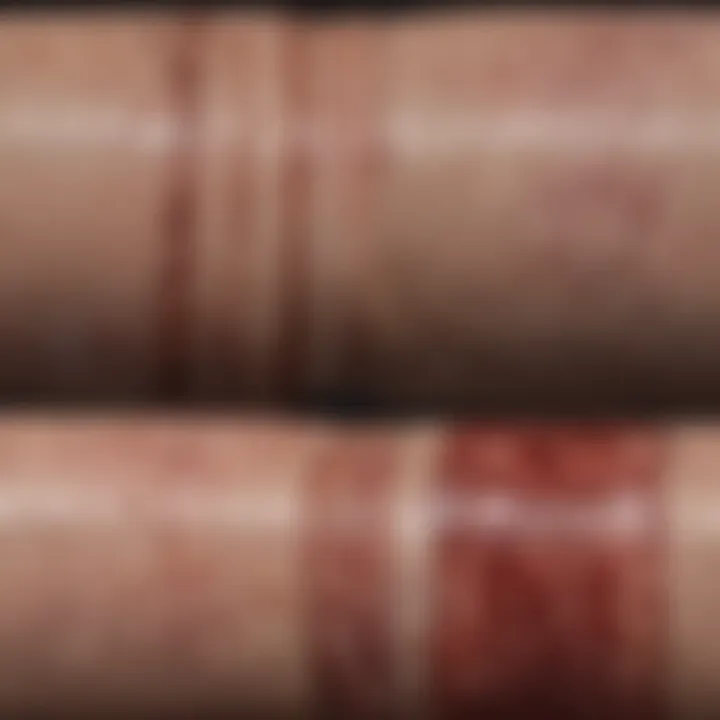
The skill set and experience of the surgeon enormously affect wound closure outcomes. A surgeon's familiarity with various techniques allows for better decision-making based on the wound's specifics. The approaches taken by seasoned professionals can differ widely from less experienced counterparts.
- A surgeon adept at intricate suturing techniques can employ advanced methods in aesthetically sensitive areas, thus enhancing appearance and reducing recovery time.
- Conversely, newer surgeons might rely more heavily on standard methods, which can limit their adaptability in complex situations.
"The right closure technique is as much an art as a science, influenced by the unique scenario at hand, including patient factors and the surgeon’s skill," emphasizes a well-versed practitioner in the field.
Complications in Surgical Closure
Complications arising from surgical wound closure can significantly impact patient outcomes. Addressing these issues proactively can not only enhance healing but also improve aesthetic results and reduce longer-term consequences for patients. Awareness of complications is vital for healthcare professionals as they navigate the complexities of wound management. Proper techniques, materials, and postoperative care can mitigate many complications that may arise from surgical closures.
Infections
Infections are among the most common and serious complications in surgical closures. They can lead to prolonged hospital stays, additional surgical interventions, and sometimes even critical health issues. Various factors can influence the likelihood of an infection developing:
- Surgical environment: An unsterile environment or improper techniques can introduce pathogens during the procedure.
- Patient health: Pre-existing conditions, such as diabetes or obesity, can impair immune response and increase susceptibility to infections.
- Wound care post-surgery: Patients must follow instructions for keeping the wound clean and dry to avoid contamination.
When infection occurs, it typically presents with redness, warmth, swelling, and discharge from the wound site. Early recognition and intervention are essential. Treatment options may include antibiotics or, in more severe cases, surgical drainage of infected tissue. As the saying goes, "An ounce of prevention is worth a pound of cure," and this rings true in surgical wound management.
Dehiscence and Evisceration
Dehiscence refers to the reopening of a surgical wound, while evisceration is a more severe complication involving the displacement of internal organs through the opened wound. Both conditions can lead to serious health risks, prolonged recovery, and increased healthcare costs.
Factors contributing to these events include:
- Tension on closure: Excessive tension can cause the sutured tissues to pull apart. Surgeons must consider the wound type and closure technique to minimize this risk.
- Inadequate healing: Poor blood supply or local conditions that hinder healing can lead to compromised closure.
- Patient compliance: Patients play a crucial role in their recovery. Following postoperative directives, such as avoiding strenuous activities and keeping incisions clean, can reduce the risk substantially.
If dehiscence occurs, swift action is critical. The surgeon may need to return to the operating room to repair the wound properly.
Scarring and Aesthetic Considerations
While healing is the primary goal of any surgical closure, aesthetic outcomes also hold significant importance for patients. Scarring can lead to psychological distress and lowered quality of life.
Several factors can determine the extent of scarring:
- Closure techniques: Techniques such as layered closure or meticulous suturing can lead to minimal scarring. For instance, an intradermal suture technique may reduce visible scars by enclosing the wound within the dermis.
- Location of the wound: Areas with increased tension or movement, like the joints, may be more prone to prominent scarring.
- Postoperative care: Proper care involving sun protection, moisturizing, and possibly topical treatments can improve healing and aesthetics over time.
Consideration for cosmetic outcomes is not only beneficial for the patient’s psyche but can also influence future surgical decisions.
In summary, complications in surgical closure encompass a range of challenges that require a multifaceted approach. From preventing infection to managing evisceration and focusing on scarring, the issue is complex but critical. Understanding these aspects helps practitioners strive for better patient outcomes and a smoother healing process.
Postoperative Care and Management
In the realm of surgical wound care, the importance of postoperative management cannot be overstated. This phase is crucial in influencing the overall outcome of the procedure and entails a systematic approach to monitoring and support of the healing process. After a surgical intervention, the body goes into a delicate phase where wounds require special attention to mitigate complications and promote optimal recovery. It’s like watching a new plant grow; if the conditions aren’t right, that tender shoot may just wither away.
Wound Inspection
Wound inspection is the cornerstone of good postoperative care. Regular checks allow practitioners to assess healing and identify potential problems before they escalate. Early detection of issues is akin to catching a leak in the roof before the whole structure crumbles. Inspecting the wound involves observing for several factors, such as:
- Redness: Some inflammation is expected, but excessive redness can be a red flag.
- Swelling: While minor swelling is normal, significant swelling often indicates an underlying issue.
- Drainage: The presence of fluid is normal initially, but a sudden change in color or odor suggests the possibility of infection.
- Pain Levels: Monitoring pain can provide insights—escalation may indicate complications.
It's critical to establish a routine for these inspections, be it daily or every few days, depending on the wound's nature and location. Following the guidelines suggested by surgical teams helps lay the basis for recovery, ensuring that minor issues are addressed before they become major problems.
Signs of Complications
Despite the best efforts in surgical closure, complications can arise. Recognizing the signs of these complications early is essential. Common warning signs include:
- Increased Pain: Pain levels should gradually decrease. If pain increases or shifts in nature, it could signal an issue.
- Fever or Chills: Systemic symptoms like these could indicate a more serious infection.
- Separation of Wound Edges: If the wound edges appear to be pulling apart, this might signal dehiscence, which can lead to significant complications if not addressed immediately.
- Unusual Discharge: Any change in the discharge, especially if it becomes purulent or has an offensive smell, is a cause for concern.
Understanding these signs is crucial in facilitating timely interventions that can mitigate further complications.
"Awareness is key; your ability to spot subtle changes can make a world of difference in outcomes."
Future Directions in Wound Closure
The field of surgical wound closure is continually evolving, confronted by new challenges as well as opportunities for improvement. In today's fast-paced medical landscape, the need for better patient outcomes is at the forefront, driving innovations and research in wound management. This section delves into future directions that promise to enhance both the efficiency and effectiveness of surgical closures, ultimately aiming to reduce complications and improve healing.
Novel Materials and Techniques
With the ongoing advancements in material science, healthcare professionals are increasingly adopting novel materials that address the limitations of traditional methods. These innovative materials often prioritize biocompatibility and biodegradability, ensuring that the body’s natural processes can function with minimal interference.
For instance, bioactive sutures are gaining traction. These sutures can deliver medication directly to the wound site, specifically designed to prevent infections or promote faster healing. There's also the exploration of nanofiber scaffolds, which mimic the extracellular matrix, enhancing cellular activity and promoting wound healing. When it comes to closures, advanced techniques such as laparoscopic suturing allow for minimally invasive procedures, significantly improving recovery times and reducing pain for patients.
- Benefits of Novel Techniques:
- Minimized scarring and improved cosmetic outcomes
- Lowered risk of complications, like infections
- Accelerated healing processes
"By integrating cutting-edge materials and methods, we’re opening the door to surgical practices that could very well redefine patient recovery norms."
Regenerative Medicine Approaches
The realm of regenerative medicine is poised to make a substantial impact on surgical wound closure. This area of study focuses on repairing, replacing, or regenerating damaged tissues and organs, thereby enhancing the body’s natural healing capabilities. Researchers are investigating the potential of stem cell therapy and growth factors to aid in wound healing, providing promising avenues for better closure strategies.
One groundbreaking method involves the application of platelet-rich plasma (PRP), rich in growth factors that can stimulate tissue repair and regeneration. Furthermore, advancements in three-dimensional bioprinting are allowing for the creation of custom-made grafts that are biologically compatible with the patient's tissue, effectively bridging gaps in healing processes.
- Considerations for Adoption:
- Ethical implications surrounding stem cell usage
- Cost-effectiveness and accessibility of new treatments
- Continuous need for clinical trials to gauge effectiveness
As these approaches continue to gain traction, they bring about not just technical possibilities but also a shift in paradigm toward a more integrated understanding of wound closure and healing. It’s important for practitioners to stay abreast of these developments as they navigate the complex landscape of surgical wound management.



